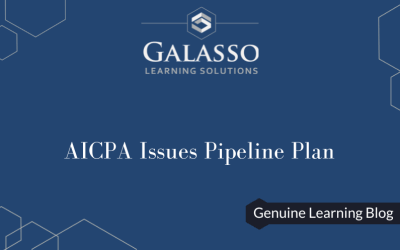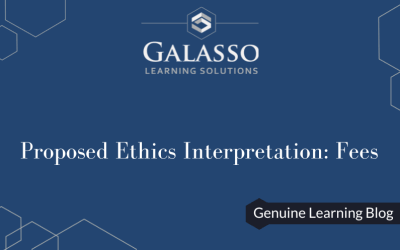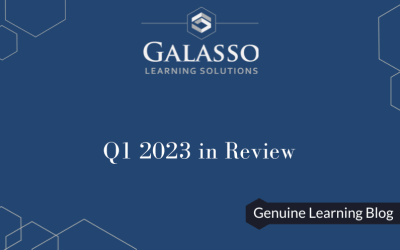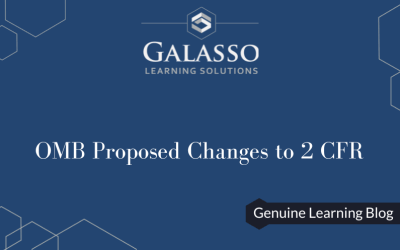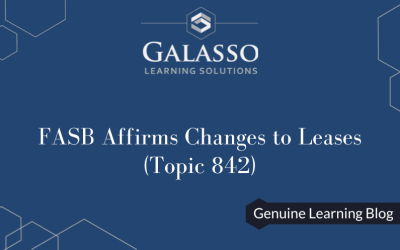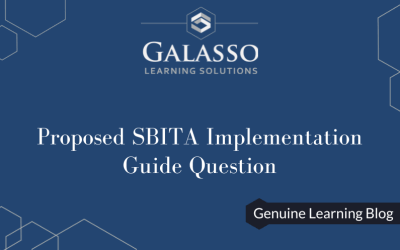Genuine Learning Blog
The Genuine Learning Blog is a video series designed to keep you abreast of the latest developments in accounting and auditing. This is a not a teaser, marketing tool. This blog breaking down new proposals from GASB, FASB, and the AICPA into short manageable videos. Watching this series will make you better informed than your peers!
Ethics Proposal: Public Interest Entities
The AICPA’s Professional Ethics Executive Committee (PEEC) has proposed a new definition of publicly traded company and has revised the definition of public interest entity as part of their IESBA convergence. The definition explains when AICPA independence standards would apply and when related ethics standards like PCAOB and NAIC standards would apply. Comments are due September 15.
GASB Approves New SBITA Q&A
GASB has approved the issuance of a new Implementation Guide to be issued soon. This blog will review a key question related to SBITAs that is addressed in the IG as well as the impact of the new Q&A on automatically renewing SBITAs.
Spring Council 2023 Update
This week’s GLS Genuine Learning Blog gives an overview of the happenings at the Spring 2023 AICPA Council Meeting with a look at the agenda and key topics covered during Hill visits. We’ll review the key focus areas of the 2 day meeting.
2023 Compliance Supplement
On Friday May 19, the Office of Management & Budget issued the 2023 Compliance Supplement. This blog will review the largest changes of the various parts of the Supplement. The new Supplement is effective starting with our June 30, 2023 year ends.
AICPA Issues Pipeline Plan
The AICPA issued the 4th version of their plans to improve the pipeline of accounting professionals. The AICPA provides some examples of what is causing the issues and what major programs that are introducing to address the barriers to entry.
FASB ED: Profits Interests
The FASB has issued a proposal to provide guidance for companies (both public and private) to reduce diversity in practice around accounting for profits interests. The proposal includes a new fact pattern as an example to assist preparers in determining the appropriate ASC Topic to apply to these types of arrangements. Comments are due July 10, 2023.
NASBA Changes Conditioning Rule for CPA Exam
NASBA announced that they have extended the time to sit and pass the CPA exam from 18 months to 30 months after receiving over 850 comment letters. The original proposal was an increase to 24 months. In addition, the window is based on the date scores are released and not when the candidate sat for the exam. A big caveat is that NASBA has only changed the model rule. It is now up to the 55 State Boards of Accountancy to make changes at the state level.
COSO Issues Report on Internal Controls Over Sustainability Reporting (ICSR)
COSO has issued a nonauthoritative report on how organizations can leverage the 17 principles and 81 points of focus in COSO 2013 to sustainability reporting. The report provides examples and illustrative case studies to demonstrate how to leverage the internal control framework for a sustainability focus.
Proposed Ethics Interpretation: Fees
On March 15, 2023, the AICPA’s Professional Ethics Executive Committee (PEEC) issued an exposure draft relating to fees. The exposure draft includes new interpretations for determining fees for an attest engagement and new fee dependency interpretations, as well as a revised conceptual framework for independence interpretation and revised client affiliates interpretation. Comments are due by June 15, 2023.
Proposed ASU: Income Tax Disclosures
The FASB has issued an exposure draft regarding new disclosure requirements relating to income taxes. In addition to new disclosures, the proposal also includes removal of existing disclosure requirements. Comments are due May 30.
Q1 2023 in Review
Q1 2023 started off slow but ended with a burst of activity. We’ll review the standards issued by the AICPA and FASB in the first quarter of 2023 including the new leases under common control standard as well as SAS 149 for group audits.
Proposed Ethics Interpretation: Cheating in CPE
The AICPA’s Professional Ethics Executive Committee (PEEC) has issued an exposure draft to make falsifying attendance records or sharing answers (when not permitted) in CPE an act discreditable to the profession. This expands the rules around sharing answers or requesting answers to the CPA Exam. Comments are due by May 15.
FASB Issues Crypto ED
The Financial Accounting Standards Board (FASB) has issued an exposure draft to address feedback from users, preparers and auditors that crypto currency disclosures needed attention. The proposal would require entities to measure crypto assets at fair value (with adjustments flowing through net income). It would also add disclosures around significant holdings, restrictions, and changes in those holdings. Comments are due June 6!
Proposal for International Non-Profit Accounting Guidance
Taking a big first step towards a global nonprofit accounting framework, IFR4NPO has issued the first of 3 expected exposure drafts for public comment. The exposure draft addresses scope and basic framing for the development of a new global framework for nonprofit organizations. Comments are due March 31.
FAF Rolls Out Free Access to Codification & GARS
GLS is very excited about the recent roll out by the Financial Accounting Foundation (FAF) of its free (and enhanced) access to the FASB Codification and the GASB’s Governmental Accounting Research System. This makes accessing and researching accounting more accessible especially for smaller entities to comply with the standards. The fact that it is free will help reduce barriers to entities following GAAP. We are excited to see the impact this change will have on smaller organizations!
OMB Proposed Changes to 2 CFR
The OMB provided notice of Request for Information (RFI) and notification of proposed guidance to 2 CFR. The OMB, through the RFI and the proposed rule revisions, is seeking to harmonize the regulations of federal grants and agreements to improve efficiencies, allow for greater transparency, and create a more effective process for both grant recipients and federal agencies. Feedback on the guidance and revisions to 2 CFR are due on or before March 13, 2023.
FASB Affirms Changes to Leases (Topic 842)
On February 15, 2023 FASB affirmed the proposed changes to Topic 842, Leases for related parties under common control. The Board unanimously affirmed a practical expedient for private entities & nonprofits without conduit debt under common control arrangements to allow these entities to use the written terms and conditions of their leases to apply Topic 842. FASB also affirmed a change to the amortization of leasehold improvements for all common control entities including public entities. Leasehold improvements between entities under common control will amortize improvements over the useful life of the leasehold improvement as long as the lessee controls the use of the underlying asset through the lease. The final Update will be effective fiscal years beginning after December 15, 2023, including interim periods within those fiscal years. The FASB indicated that the new ASU is expected to be issued by the end March.
Proposed SBITA Implementation Guide Question
The GASB has exposed one additional question related to cloud computing arrangements and the scope of GASB 96. The question provides guidance on how to evaluate cloud computing arrangements in the context of a SBITA. Comments are due March 10, 2023.
Disclaimer: The information contained within this blog is provided for informational purposes only. Viewing this material does not qualify for CPE credit. Additionally, this general knowledge is not intended to substitute for obtaining accounting, legal, or financial advice from a professional accountant with specific knowledge of your organization. Finally, watching this blog and/or subscribing to the newsletter do not create an accountant-client relationship.






